Spring tours in Dali, Yunnan, Erhai Lake, Cangshan Mountain, and ancient towns have strong spring charm, and slow travel makes people intoxicated
Dali: Wen Qing's Poetry and Distance
There are always people who say: Life is a journey, and travel is the epitome of life. People and things you encounter during the journey are a quick glimpse of life.
Therefore, people love to travel, changing different destinations again and again, seeing different people and things, and feeling different cultures.

Dali, a city that makes people feel at peace and fades away from impetuosity. When you step into this city, you seem to have forgotten everything in an instant...
Many people take a quick sightseeing trip and put what they see in the deepest part of their hearts, looking forward to returning to Dali in their dreams.
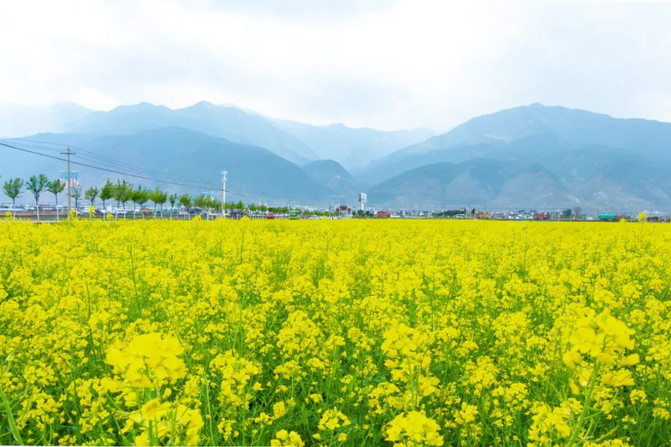
In the impression of many people in Dali, Cangshan Mountain embraces the Erhai Lake, and intertwined roads connect every piece of land and every village.
In the dam, birds sing and flowers are fragrant, large tracts of flowers are colorful, Cangshan Mountain stretches for dozens of kilometers is green, flowing clouds are wandering under the blue sky, and the sun gently caresses every corner.

Dali's rhythm of life and urban style give people a strong sense of "retreat". This is the home where the "wanderers" want to stop.
Dali's lazy, comfortable and slow life is a life that is lingering in the hearts of people tired of prosperous cities. I didn't understand before why so many people would rather give up everything in the big city, move their families to Dali, and start a new life again.

Now, I may understand a little, because only by experiencing the hustle and bustle of the world and experiencing an extremely busy life can I understand that Dali brings people precious tranquility and a life of free choice.
The days here are quiet and plain. I don't know when they started until now. Here you can stick to the thin years and stick to your hobbies.
The breeze blowing from the Erhai Lake, the falling rain on the top of Cangshan Mountain, the birds flying in the sky, the rising and setting sun, and the withered and blooming flowers in spring, summer, autumn and winter exude a taste of happiness.

After a spring rain, Dali's spring is warm and flowers are blooming, the spring breeze is blowing, and colorful flowers are blooming all over the fields. The spring tour in Dali officially begins!
For 7 days and 6 nights, I searched for my dreams in Dali and started the slow time of travel.
Four cableways, two mountains, two roads, a sea, an island, an ancient city, a film and television city, a temple, a pool of spring water, and a West Lake. The 7-day trip has seen all the mountains, rivers and waters of Dali and felt Dali's unique life!

Tips: The four cableways are Gantong cableway, Cangshan Ximatan Grand Cableway, Zhonghe Cableway and Jizushan Cableway; two mountains are Cangshan and Binchuan Jizu Mountain; two roads are Cangshan Jade Belt Yunyou Road and Erhai Huanhai Road; one sea is Erhai Lake; one island is Nanzhao Style Island, and one film and television city is Tianlong Babu Film and Television City; one ancient town is Xizhou; one temple is Chongsheng Temple Santa Cultural Tourism Area; one pond spring water is Butterfly Spring; one West Lake is Eryuan West Lake.









Cangshan is an animal and plant gene bank and one of the water sources of the Erhai Lake. These aspects can be seen to its lofty status in Dali.
Cangshan Mountain is located in the Hengduan Mountains, the most complex terrain in China. The formation of Cangshan Mountain is inseparable from plate movement. As we all know, the Himalayas, the roof of the world, were formed by the fierce collision between the Indian Ocean plate and the Asian continent, which triggered large-scale orogenic movement, and the earth's crust was lifted. Dali Cangshan Mountain is also one of them.
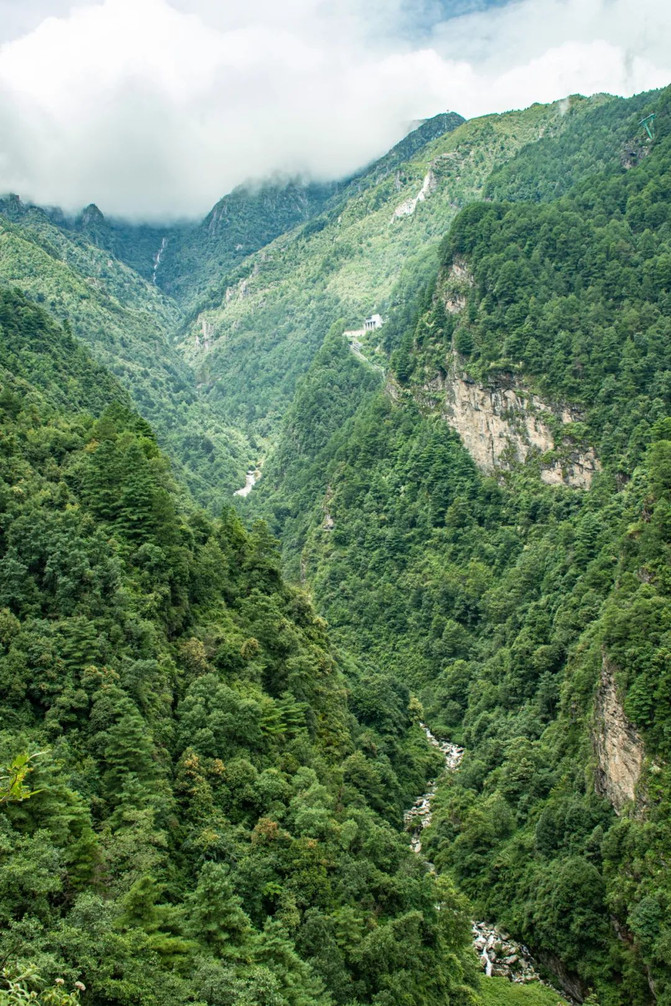
After the formation of the mountains, a large amount of water vapor was blocked, coupled with the right temperature, a large number of animals and plants bred here, and Cangshan Mountain began to look like it is today.
Tall, steep and straight, with peaks stacked on top of each other, mysterious and unpredictable. Standing at the foot of the mountain and looking up at the majestic body as if it were the patron saint of this land, where the gods lived.

Cangshan changes endlessly all year round. It is mysterious when clouds of clouds are churning and clouds are shrouded in clouds on the top of the mountain; its outline is clearly visible when it is clear in the clear sky; and it is cold and deep when it is covered with snow.
A cloud and a pool of water are a legend, while a snow and a sea of flowers are an obsession that makes people unable to extricate themselves!

Jizu Mountain is located in Binchuan County, Dali. Each mountain in Yunnan has its own characteristics and is particularly prominent. Jizu Mountain is the mountain with the strongest Buddhist culture in Yunnan Province.

From the foot of the mountain to the top of the mountain, traces of a century-old temple and temples rebuilt on the original site can be seen everywhere. The strong Buddhist culture and the tranquil environment make an endless stream of tourists coming to climb mountains from weekends to holidays.
Jizu Mountain may seem inconspicuous, but in fact it has a unique cave. There are many temples in the mountain and a large number of wild monkeys appear at will. The Shangyan Tower on the top of the mountain is a natural landmark of the Hump Route.


The biggest feeling when entering Jizu Mountain is "tranquility". Even in the crowded temples, I still feel that tranquility is the norm here. The noise and noise do not belong here.
The ancient trees, ancient temples and permanent residents in the mountains are influenced by this atmosphere year after year, and have a kind of "calm calm and calm, calm and calm."



As long as you enter Jizu Mountain, for no reason, you can calm down and pay attention to and discover things that you have not paid attention to.
Gantong Cableway: A stream makes people intoxicatedGantong Cableway is one of Cangshan Cableway, the first cableway from south to north in Cangshan. It is named after being adjacent to the famous thousand-year-old temple in Dali-Gantong Temple.
The Gantong cableway has a total length of more than 2500 meters in one way, and the altitude difference is not large. A cableway leads directly to the hinterland of Cangshan Mountain.

The main attractions on the front line of Gantong cableway are Qingbi River, Zhenlong Chess Game, Cangshan Grand Canyon, and the most special one is Qingbi River.
Qingbi River is recognized as the most beautiful among the eighteen rivers in Cangshan. The style of the stream is very special, with both a strong side and a gentle side.
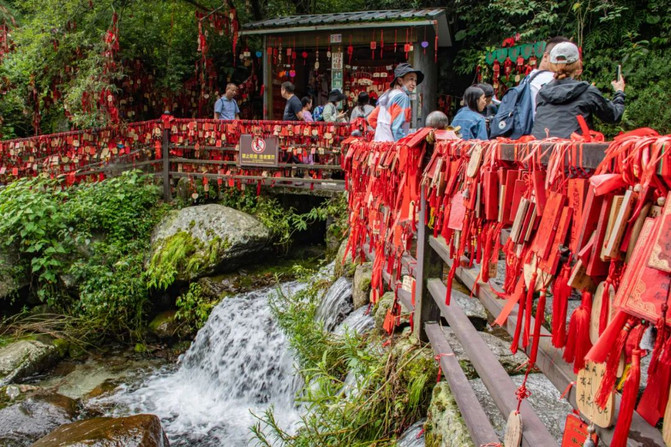
The three ponds of Qingbi River are independent and integrated. Shangtan is the most mysterious, and few people can see the whole picture.
Zhongtan is the most eye-catching. When there is abundant rainfall, the water from the upper tan rush out of the mountains, forming a white line on the cliff, and falling into the second stream. The minerals in the pool water have undergone eternal precipitation, and the water color has formed a rich blue-green color.
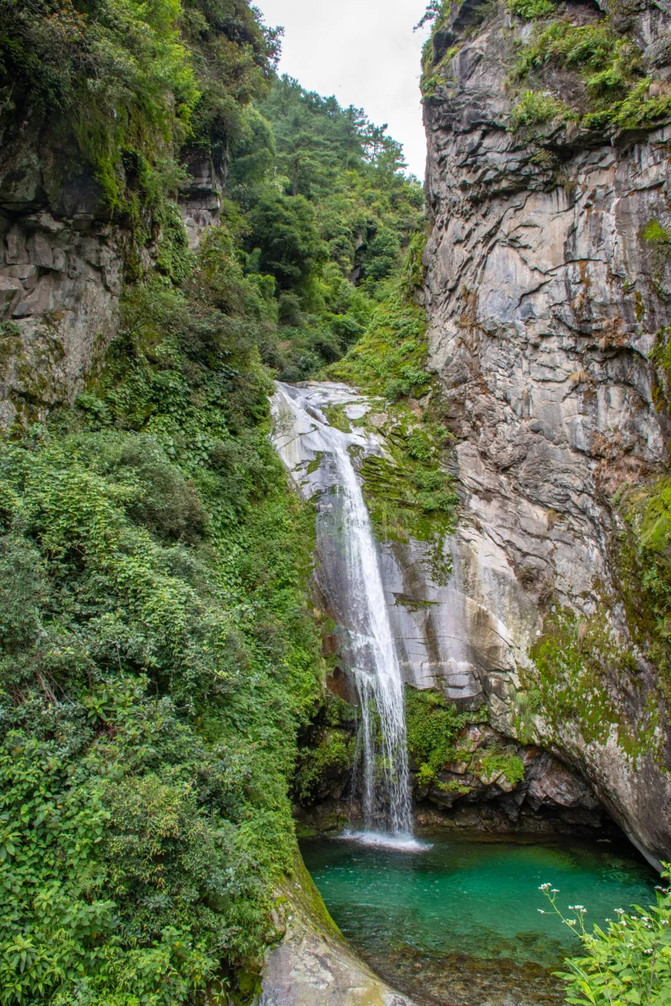
Xiatan has a slightly slow terrain and is located between two mountains. The area is the largest. The water in the pool is not deep, but it is crystal clear to the bottom. There is a statue of Guanyin in the center of the pool, and a row of huge stepping stones are placed on the front of the pool for tourists to play.

The Cangshan Ximatan Cableway is the cableway with the highest altitude, the largest altitude difference, and the longest distance among the three cableways in Cangshan. It is also the only cableway on Cangshan that requires one transfer to reach the Ximatan Scenic Area on the top of the mountain.
The Ximatan Cableway is also the highest cableway in the country!

There are three attractions on the Ximatan Cableway Tour Route, the first is the Ximatan Scenic Area, the second is the Qilongnu Pond, and the third is the Tianlong Babu Film and Television City.
The three scenic spots have different characteristics and attractions. Ximatan and Qilongnu Pond are dominated by natural scenery, while Tianlong Babu Film and Television City is dominated by cultural customs.

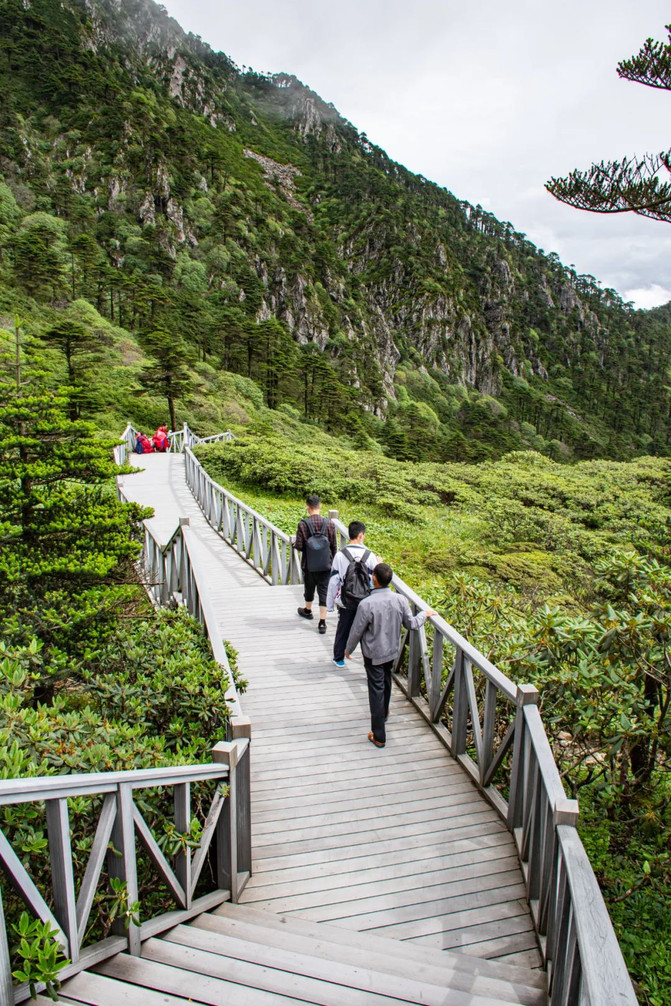
Ximatan is a lake on Cangshan Mountain. Legend has it that the army commanded by Kublai Khan stationed Xima here.
The scenery of Ximatan has a strong seasonal nature. The water in Ximatan is most abundant in summer and autumn. In summer, azaleas and other wild flowers bloom all around the azalea season. The fir is green in color, and the fog is scattered like a Penglai Wonderland.
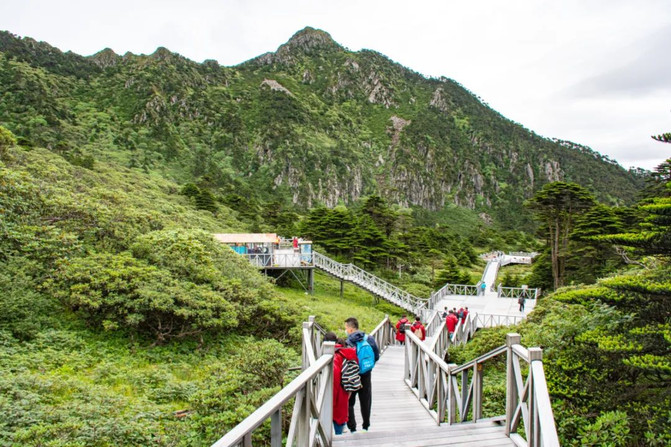



In winter and spring, there is not much water vapor in the air, and Ximatan does not feel hazy. However, because of the white snow, there is a sense of coldness and alienation. There is no fog to block all the scenery of Ximatan, and a corner of the Erhai Lake is also clear., but the main color of Ximatan has changed to white.


Qilongnu Pond is seven spring ponds in the mountains. Each spring pond has different shape and scenery. Streams, spring ponds, and waterfalls all combine or appear separately in Qilongnu Pond.
The scenery of Qilongnu Pond is as seasonal as Xima Tan. During the dry season, the water volume in the entire Cangshan Mountain will decrease, and the water volume in Qilongnu Pond will also decrease. In turn, the waterfall landscape will be affected, and the waterfalls will disappear or the water volume will decrease.
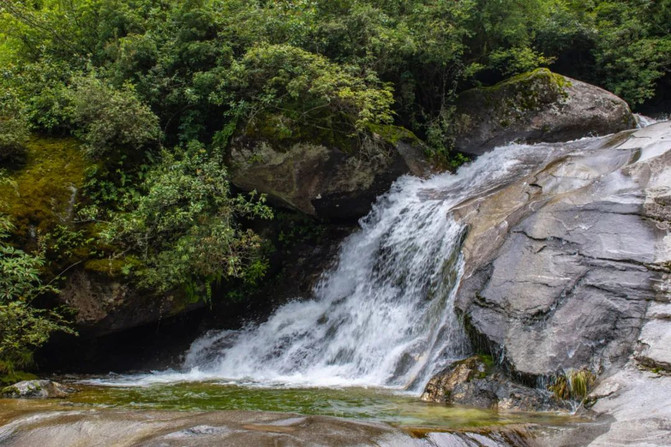


As a habitat for animals and plants, Cangshan is not only lush with vegetation, but also has many animal species. Red pandas can be found near Qilongnongchi.
Zhonghe Cableway: A distinctive open-air cablewayZhonghe Cableway is the northernmost of the three cableways in Cangshan. It is an all-open-air cableway. Sitting on the cableway can feel the coolness of Cangshan and the freshness of the air.
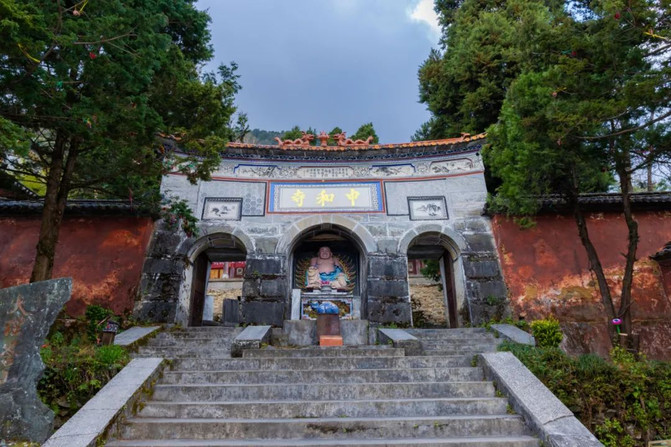
The attractions near Zhonghe Cableway are slightly inferior to the other two cableways. There is only one Zhonghe Temple, but as the terminal point of Yudai Yunyou Road from south to north, the scenery during the hiking journey from Qilongnongchi to Zhonghe Cableway is different.
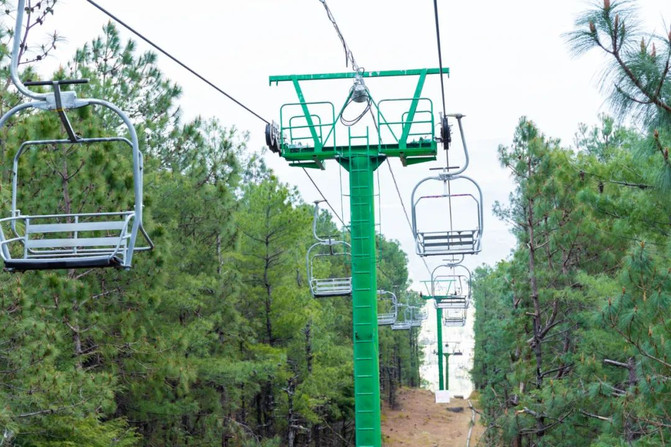
Yudai Yunyou Road is a bluestone hiking path 11.5 kilometers long and 2 meters wide halfway up Cangshan Mountain.
Gantong Cableway, Ximatan Cableway (Qilongnongchi Station), and Zhonghe Cableway are all connected to Yudai Yunyou Road. No matter which cableway you take, you can reach Yudai Yunyou Road. The only difference is that the combination of cableways has different hiking routes and different scenery.


Take the Gantong Cableway to the starting point of Yudai Yunyou Road. From the starting point to Qilongnongchi Station is the first half of Yudai Yunyou Road, and from Qilongnongnongchi to Zhonghe Cableway is the second half.
In the first half of the year, the mountains and mountains of Cangshan are mainly dominated by mountain scenery and water appreciation. During the rainy season, you will see that the mountains and mountain tops are covered in fog, and the pure white stream water between the valleys is winding among the green forest sea.



The second half of the year is mainly dominated by strange rocks and Erhai Dam, and the viewing view is wider. The strange rocks along the way are jagged, as if you have accidentally entered the third pole of the world.

The strange stone has various shapes, just like someone is digging it, which is very surprising!

Dali has many well-known tourist roads, such as the Dali Line, the Xijing Line, etc. These roads connect the beauty of Dali. The Dali Line has picturesque pastoral scenery, sea of flowers all year round, etc., and the most famous of these tourist roads is Huanhai Road.

Huanhai Road is divided into Huanhai West Road and Huanhai East Road. Huanhai West Road is close to Xizhou Ancient Town, Dali Ancient City, Longkan Wharf and the fishing village along the Erhai Lake.
Huanhai East Road starts from Haidong Town and passes through Luoquan Peninsula, Xiaoputuo, Shuanglang and Nanzhao Style Island.

In addition to scenic spots, the Road Around the Sea is also a popular route for young people to take photos and travel on a self-driving tour. The warm wind blows the lake and the sun shines brightly. Leisure people stop and go on the road while driving and riding cars.


Erhai Lake, the pearl on the plateau, is a unique dreamland formed by absorbing the essence of heaven and earth.
The Erhai Lake stretches for hundreds of miles from north to south and dozens of miles from east to west. Relying on this lake water, Dali's civilization thrives and inherits here, and Dali people live and work in peace and contentment here.

A long time ago, people and the lake seemed to have signed a contract. Generations of Dali people guarded it, and it also provided Dali people with the most needed survival resources.
Nowadays, the lake not only gives people living resources, but also gives Dali people inexhaustible and beautiful scenery. Everyone can wander in this fairyland.

Erhai cruises are a tool for wandering around the fairyland. A cruise ship traverses north and south, taking the people on board to tour the fairyland, overlooking Cangshan Mountain, taking a close look at Erhai Lake, and watching migratory birds flying low and circling on the water.

Nanzhao Style Island is located in the golden area of Dali where the sea and sky are the same. It is the only island in the Erhai Lake that is not connected to the shore.
Legend has it that Nanzhao Style Island was once the summer resort of Nanzhao State.
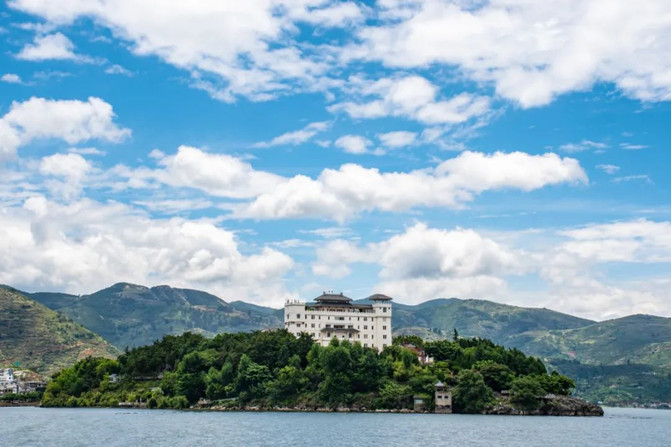
Nanzhao Style Island is the most representative island in Shuanglang. The rippling Erhai Lake and the towering 19 peaks of Cangshan Mountain are all its background.
Natural wonders such as sunset, sunrise, rain, fog, and clouds often appear, and the exquisiteness and otherness of Nanzhao Style Island are fully demonstrated.
Away from the shore, time on Nanzhao Style Island has slowed down and quieted down, forming a sharp contrast to the lively Shuanglang Town on the shore.

The ancient town is the history of the city and a living folk museum!
Xizhou, one of the many ancient towns in Dali and the one closest to the ancient city of Dali, collects Bai architecture from various periods during the Ming, Qing and Republic of China.

Looking from afar, the white walls and black tiles are like a simple and elegant city. The unique shape and almost perfect structure give people a sense of beauty and texture that is elegant but free, powerful and solemn but light and lucid.

Walking into the ancient town, you will find Bai folk houses with ink paintings and colors, locals walking leisurely in the alleys of the ancient town, and tie-dyed cloth flying in the wind. All of them give people the feeling that "time has frozen here!"


Tianlong Babu Film and Television City exists because of the 2003 version of the classic film and television series "Tianlong Babu", and also because the film and television series let more people know that there is a "martial arts world" at the foot of Cangshan Mountain.
Tianlong Babu Film and Television City and the surrounding buildings have clear boundaries and unique styles. Several city walls and two gates enclose this place into a unique place.

The layout of Tianlong Babu Film and Television City is not complicated, with the Dali Palace Building Complex as the center, and Dali Street and Daliao Street connect all important buildings.


Entering from the main gate is Dali Street, which is also the main road leading to the Dali Palace. On both sides of the main road are antique buildings, which are mostly used as commodity display areas, folk display areas and leisure areas.

At the end of the street is the entrance to the palace. The three round arches with very ethnic characteristics are the main entrance of the palace. The palace is through the steps. The building is tall and square, and the pavilions and corridors show a simple charm, with a different majestic atmosphere from ordinary buildings.

There are still various shops next to each other on Daliao Street. Wonderful performances are staged here every day, and people come and go, truly recreating the lively street scene of Dali a century ago.

The entire Tianlong Babu Film and Television City has everything to eat, play, buy and see, as if it was a miniature landscape from the Dali Dynasty period.
The Three Pagodas of Chongsheng Temple: The Three Pagodas of the Changing Times of HistoryThe Chongsheng Temple Three Pagoda Cultural Tourism Zone is the only AAA-level scenic spot in Dali. The landmark buildings in the scenic spot-the three brick towers are also one of the few thousand-year cultural relics in Dali.

The Chongsheng Temple Three Pagoda Cultural Tourism Area is no longer a mere tourist attraction. It is a fusion of Dali culture.
Cultures from the Nanzhao period to the Dali period met here, and paintings, architecture, and folk customs were all displayed in the Chongsheng Temple Three Pagoda Cultural Tourism Area.


The three pagodas of Chongsheng Temple have a history of more than a thousand years from initial construction to destruction and restoration. The changes in Dali's development process are reflected in them. Therefore, it is impossible to say that the three pagodas of Chongsheng Temple are the spiritual treasure of Dali people.
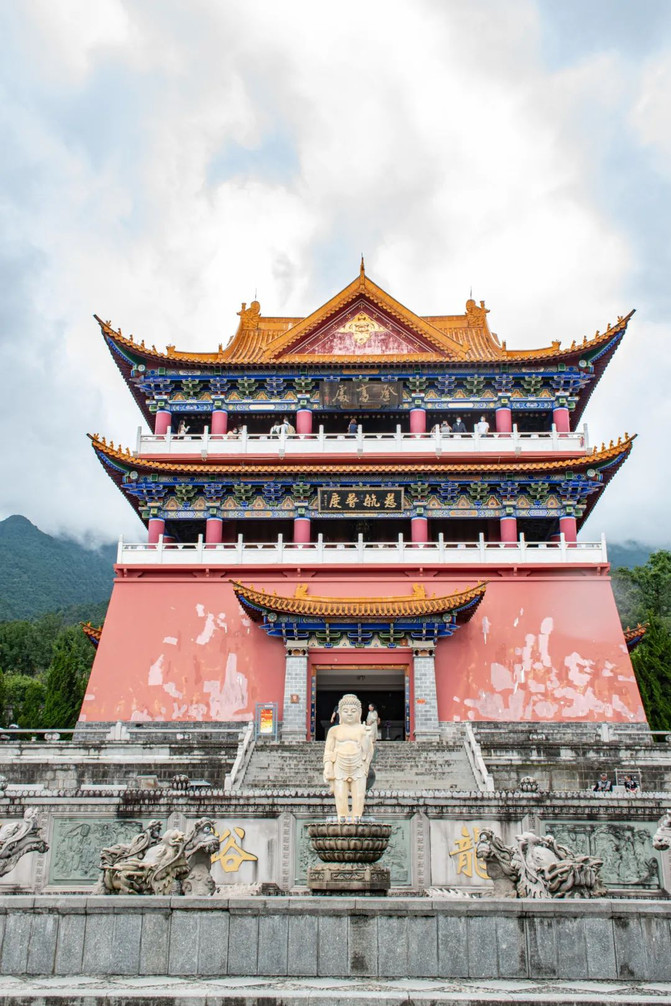
The Chongsheng Temple Three Pagoda Cultural Tourism Zone covers a very wide area. The first half is the three towers area, mainly the three towers and some natural landscapes, and the area is relatively open. The second half is Chongsheng Temple, which is densely built and relatively narrow, but the buildings are also scattered among buildings and are not crowded.



The origin or construction of one of the three pagodas of Chongsheng Temple has historical stories. Listening to the guide's explanation, you will feel that you are already in the "Dali Cultural Expo Park".
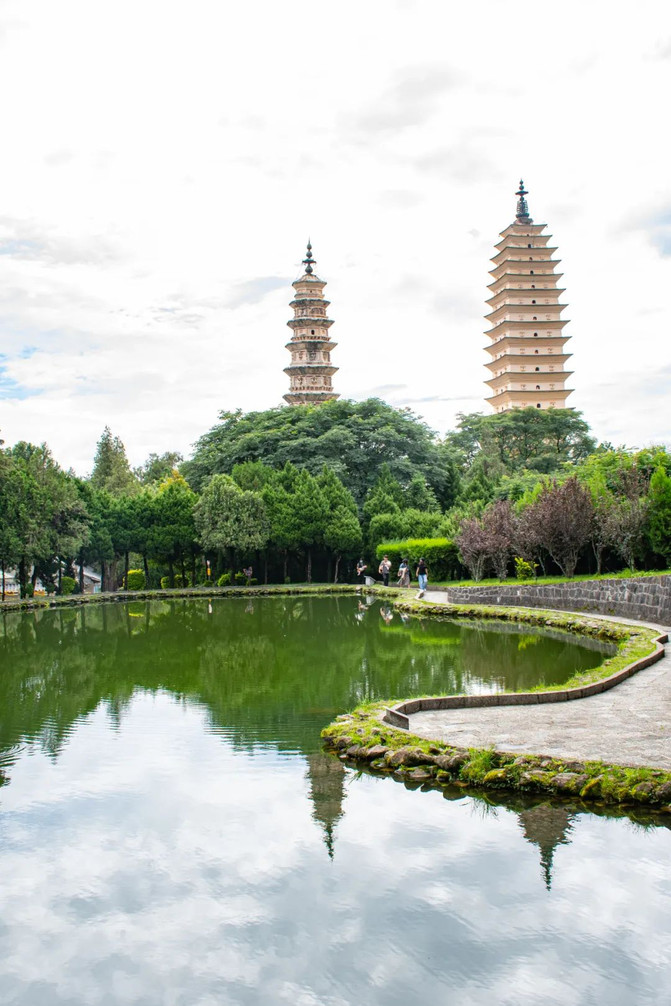
Butterfly Spring, which has remained unchanged for thousands of years and centuries, is the sacred land of love in Dali. The clear spring in Butterfly Spring Park has never dried up since its discovery. The century-old acacia tree next to the spring is still lush.

Butterfly Spring a hundred years ago was just the Butterfly Spring of Dali people, and its story is only circulated locally. In the past 60 years, with the popularity of a movie "Five Golden Flowers" about the "March Street" of the Bai ethnic festival in Dali, Butterfly Spring has become the Butterfly Spring of the people of the country.

After a hundred years, the image represented by Butterfly Spring has never changed and still symbolizes sincere feelings.

Nowadays, ancient trees have long reached the sky along the Huadi Spring, and trickling streams shuttle through various places. A butterfly cultivation hall-Butterfly World, the largest butterfly museum in the country, has been built. Only Huadi Spring and Lovers Lake remain unchanged.

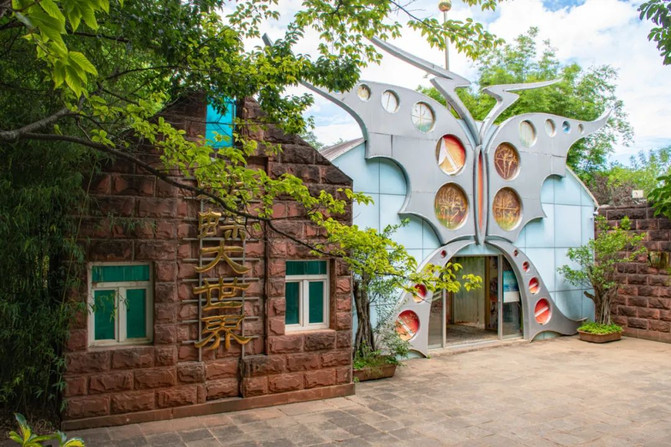
Nowadays, Huadi Spring is more leisurely and leisurely. No matter when you go to Huadi Spring, the spring water is clear and clear, carp swimming slowly in droves by Lovers Lake, and white geese are playing on the water.

Eryuan West Lake is one of the many plateau lakes in Dali.
If this is the first time you have stepped into Eryuan West Lake, you must not imagine that there is such a large lake and wetland between the flat dams.

Eryuan West Lake is hidden and mysterious, handsome and peaceful. It is a well-deserved pearl of the plateau.

The area of Eryuan West Lake is smaller than that of the Erhai Lake, with a depth of only 3.3 meters. There are reed bushes and Bai folk houses in the water, but being small has its advantages.
The environment here is excellent, with tranquility unmatched by the Erhai Lake. There is almost no other sound except for the melodious Bai songs. Looking around, there are no tall buildings, only deep distant mountains.

Visiting the West Lake in Eryuan uses the most traditional method of manually rowing wooden boats. A slender wooden boat sails in the lake, and you can see the gently swaying water plants in the water, wild lake ducks and waterbirds foraging in the reed swamps.

Using the simplest means of transportation, one boat and one paddle, two people can paddle on the lake to maximize the charm of Eryuan West Lake. Even when most people end their tour, they are still reluctant to leave.

Climbing the mountains of Dali in 7 days and 6 nights, seeing the water of Dali, enjoying the flowers of Dali, swimming through the ancient towns of Dali, waiting for the sunset in Dali, and visiting the ancient temples of Dali.
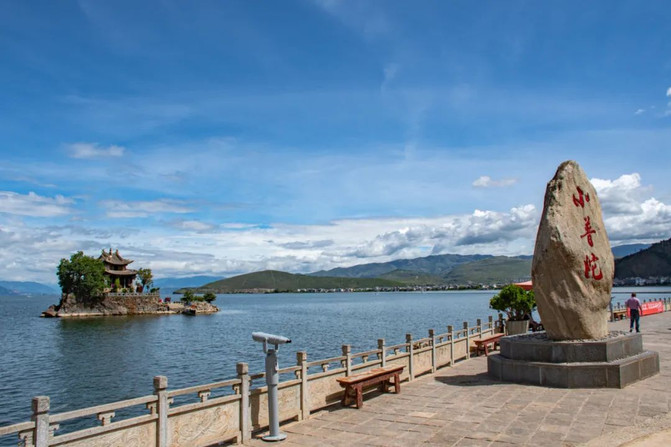
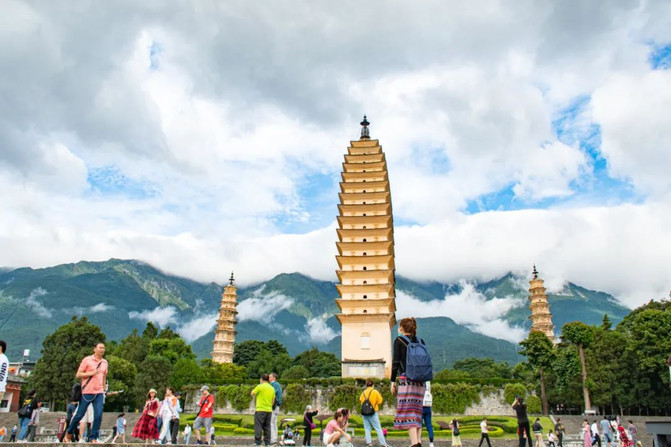

In the end, you will find that the beauty of Dali's scenery lies in its spotless and distinctive nature; the beauty of Dali's culture lies in its long history and inclusiveness; and the beauty of Dali's life lies in its uncontested and extraordinary elegance.
[Editor] Reading Yunnan Yijing
[Remarks] Please indicate the reprint. If there is any infringement, please contact to delete it.
Previous Article:With a yard and friends, my living life in Dali
Next Article:Fall in love with Dali
